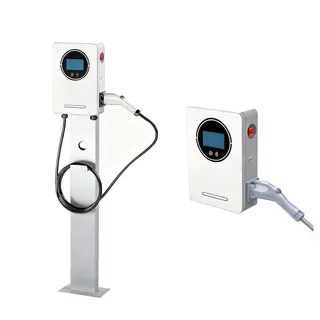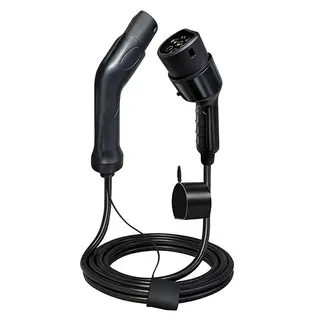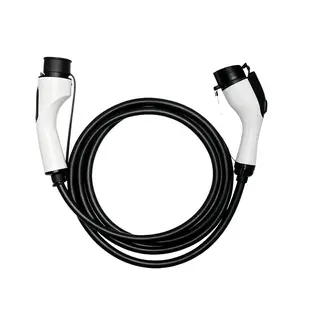In today's booming era of new energy vehicles, the advancement of charging technology has undoubtedly become a key driving force for industry development. From the early days of charging at home with a simple power strip to today's ultra-fast charging technology, the way new energy vehicles are charged has undergone tremendous changes. Today, we will take an in-depth look at the charm and challenges of ultra-fast charging technology for new energy vehicles.
The charging technology of new energy vehicles has undergone multiple updates and iterations, each greatly improving the user charging experience.
When new energy vehicles were just starting, owners could charge their cars at home using a regular power strip. This charging method operated at 220 volts. Although convenient, the charging speed was very slow. For some short-distance drivers, this method was acceptable, but for long-distance travel, it was clearly impractical.
Subsequently, "slow charging" technology emerged. Slow charging uses AC charging piles, which cannot charge the vehicle directly; instead, the onboard charger converts AC power into DC power before charging the vehicle. Due to the limited power of the onboard charger, it generally takes about seven hours to fully charge the battery. This charging method is suitable for overnight parking. Although slow, it is relatively stable.
The emergence of fast charging technology brought a qualitative leap in charging for new energy vehicles. Fast charging, also known as DC fast charging, converts AC electricity from the grid into DC power and delivers it directly to the electric vehicle. Compared with the 220-volt output voltage and 7 kW charging power of slow charging, fast charging output voltage and charging power leap to 380 volts and 60 kW, respectively. This means that within one hour, the vehicle can reach 80% battery capacity, greatly shortening charging time. Fast charging technology is commonly found at highway service stations and shopping mall parking lots, offering a more convenient charging option for drivers.
Ultra-fast charging is an upgraded version of fast charging. It uses higher-power DC electricity and can charge a battery from 20% to 80% in just 10 minutes, equivalent to 55 kWh or 320 km of range. This astonishing speed brings the charging experience of new energy vehicles close to or even surpassing that of traditional fuel vehicles.
According to industry definitions, a single-gun ultra-fast charger should have:
Charging power no less than 350 kW,
Maximum output voltage no less than 1000 V,
Continuous charging current no less than 400 A.
These parameters may sound abstract, but they mean that ultra-fast chargers can deliver a large amount of electricity to vehicles in a very short time.
Vehicles that support regular fast charging can also charge at ultra-fast charging piles because the interface standards are the same. The ultra-fast charger automatically recognizes the vehicle's charging requirements and charges fast-charging vehicles according to fast-charging mode. This compatibility allows ultra-fast charging technology to be widely applied to existing new energy vehicles without requiring vehicle replacement.
The core of ultra-fast charging technology lies in high-power charging technology and liquid cooling technology, which together create a fast and safe charging experience.
Ultra-fast charging piles can reach a power of 480 kW or more, with charging speeds 3–4 times that of ordinary fast chargers. With technological development, 1000 kW ultra-fast pilot chargers have also appeared. For example, for new energy vehicles using an 800V high-voltage platform, charging from 20% to 80% with an ordinary fast charger may take nearly an hour; using a 600 kW ultra-fast charger, this process takes only 8–10 minutes.
During charging, high currents generate enormous heat. To address this problem, ultra-fast chargers use liquid cooling technology. The core of liquid cooling technology is an efficient liquid cooling system, which consists of multiple key components including radiators, coolant, pumps, and pipe networks. Compared with traditional air cooling systems, liquid cooling systems can efficiently remove heat from charging cables and connectors, solving the problem of rapid temperature rise during high-power charging. With liquid cooling technology, there is no need to increase the diameter of charging cables to mitigate heat, fundamentally solving the problem of heavy charging guns.
In theory, ultra-fast chargers are compatible with most electric vehicles' fast-charging ports because the interface standards are the same. However, whether one can experience the full ultra-fast speed also depends on the vehicle's battery maximum charging power, state of charge, and other conditions. If the battery only supports lower power input, even using an ultra-fast charger will not improve charging speed.
The vehicle manual clearly indicates the charging parameters, including whether the battery can handle ultra-fast charging. Generally, vehicles supporting ultra-fast charging have battery management systems and charging interfaces designed for this purpose. Vehicle manufacturers can also be consulted about the maximum charging rate supported. For example, if a vehicle's battery capacity is 100 kWh and the maximum charging rate is 4C, the maximum charging power can reach 400 kW, which is four times the battery capacity.
Charging rate refers to the ratio of charging speed to battery capacity.
1C means the battery can be fully charged in 1 hour.
2C means the battery can be fully charged in 30 minutes.
3C means the battery can be fully charged in 20 minutes.
4C means the battery can be fully charged in 15 minutes.
Using high-power charging facilities is equivalent to making an electric vehicle's battery "perform heavy physical work." Frequent ultra-fast charging may accelerate battery aging. However, modern electric vehicles are equipped with intelligent battery management systems that monitor temperature and voltage in real time during fast or ultra-fast charging and automatically adjust the charging pace to protect battery health.
Although ultra-fast charging brings the convenience of rapid charging, it also faces certain challenges and high costs.
Liquid cooling requires high-quality coolant, and preventing leaks is a major challenge. The charging gun operates in complex environments, frequently dragged or dropped, and sometimes run over, requiring high sealing standards at connection points. During operation, terminals carry high voltage and current, generating substantial heat. The casing material is often heat-conductive plastic to accelerate heat dissipation. To fix terminals and connecting wires and ensure dust and water resistance, some charging guns use high thermal conductivity potting compounds.
It is estimated that liquid-cooled charging guns account for approximately 21% of the total cost of a charging pile, second only to the charging module. This means that the construction and maintenance costs of ultra-fast chargers are relatively high, which to some extent limits the speed of ultra-fast charging adoption.
Despite the challenges, the future of ultra-fast charging remains broad. As technology advances and costs gradually decrease, ultra-fast charging is expected to become the mainstream charging method for new energy vehicles.
Unlike the mainstream 400V electrical architecture, ultra-fast charging systems mostly match the 800V high-voltage platform. Compared with high current, high-voltage solutions reduce heat generation and occupy less space, making them more favored by manufacturers. However, to match high-voltage platforms, automakers must upgrade the electrical architecture system and replace silicon-based IGBTs with more expensive silicon carbide (SiC) devices.
With continuous technological progress, ultra-fast charging technology continues to innovate. In the future, we can expect higher power, higher efficiency, and safer ultra-fast charging technologies, further shortening charging times and improving the user charging experience.
Ultra-fast charging technology for new energy vehicles is undoubtedly a major breakthrough in charging technology. It not only greatly shortens charging time but also solves the heat problem of high-power charging through liquid cooling technology. Although ultra-fast charging faces challenges such as high costs and technological thresholds, with ongoing technological advancements and cost reductions, it is expected to become the mainstream charging method for new energy vehicles. For vehicle owners, the popularization of ultra-fast charging will make using new energy vehicles more convenient, making charging as fast as refueling, and further promoting the adoption and development of new energy vehicles.



